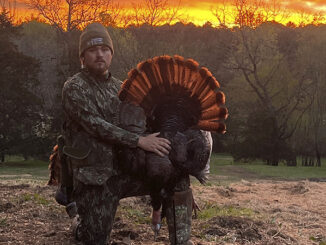
Jason Cole, who owns and guides out of Hooker’s Fly Shop in Sylva, said the small to medium creeks on the Trail are perfect for a 7 ½- to 10-foot, 3- to 5-weight rod with weight-forward, floating line. Most anglers prefer a shorter rod on the smallest creeks. Leaders in 4X-6X and from 7 ½ to 9 feet in length are common.
Cole said to pay attention to midge and mayfly hatches.
“(They) will start early to late morning, then again in the afternoon,” he said. “Dry flies or nymphs are good, depending on the depth of the water.”
Cole prefers using a dropper rig, with a dry fly and a nymph dropper. He likes to fish nymphs like a Marvin or Hothead, with a stonefly pattern on top. Tungsten nymphs are preferred to get the lure down quicker. Generally, the top will be five to six inches under the surface and the bottom 15 to 22 inches.
A short roll cast is normally used to get the line out, and this is where a long leader comes in handy. Cast upstream and let the current pull the lure down and drift through pockets just inches off the bottom. Pull the line in as the lure drifts down.
Cole says that an angler needs to carry at least two dozen flies in a variety of patters, colors, and sizes. Cole suggests yellow or greens that would include: caddis pupa in Nos. 12-16, mayfly nymphs in Nos. 12-18, midges in Nos. 18-26, and stoneflies in Nos. 6-10. For dry flies, Cole prefers stoneflies in Nos. 8-14 like a Madam X, PMX or Stimulator.
For the larger rivers, Cole said that a 6- or 7-weight, 8- to 10-foot fly rod with weight forward line and a 9- to12-foot leader are the norm. Strike indicators are used with heavy flies and streamers in Nos. 2-8 as they are drifted off the bottom. Cole suggests fishing nymphs, Clousers or Muddler Minnows and Wooly Buggers.
For smallmouth bass, Cole said a big stonefly or mayfly will work as well as topwater flies or poppers.
“The smallmouth will hang off the bank’s (at) dropoffs and on rock shelves around some kind of structure,” he said.
For summer fishing, waders are not needed. Shorts and wading sandals or shoes with boot grips work fine — or you can wade in tennis shoes.




Be the first to comment